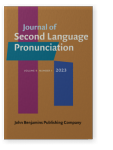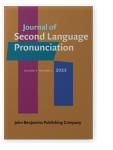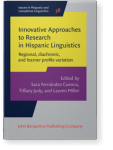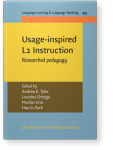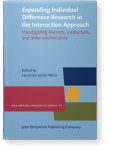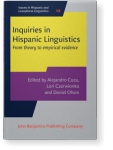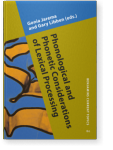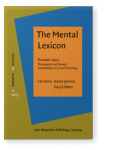Danielle Daidone
List of John Benjamins publications for which Danielle Daidone plays a role.
2023 Teaching perspectives: Spanish Journal of Second Language Pronunciation 9:1, pp. 151–160 | Review article
2023 Effects of orthography and cognate status on second language Spanish lexical encoding Journal of Second Language Pronunciation 9:2, pp. 167–191 | Article
This study examined the accuracy of English-speaking learners of Spanish in storing L2 sounds within cognates and noncognates, specifically in words containing 〈g〉 and 〈h〉, which have differing cross-linguistic phoneme-grapheme correspondences. In the first task, participants heard Spanish words… read more
2023 Chapter 9. Individual differences do not affect trill variation by advanced learners of Spanish Innovative Approaches to Research in Hispanic Linguistics: Regional, diachronic, and learner profile variation, Fernández Cuenca, Sara, Tiffany Judy and Lauren Miller (eds.), pp. 196–224 | Chapter
The current study analyzed whether variation in trill pronunciation by advanced learners of Spanish is conditioned by individual differences in phonological short-term memory, executive working memory, second language vocabulary score, and years of study, as well as five linguistic variables. We… read more
2018 Chapter 13. Examining multifaceted sources of input: Variationist and usage-based approaches to understanding the L2 classroom Usage-inspired L2 Instruction: Researched pedagogy, Tyler, Andrea E., Lourdes Ortega, Mariko Uno and Hae In Park (eds.), pp. 291–311 | Chapter
Input is a central, driving component in nearly all theories of second language acquisition, but little is known about the relationship between the instructor-provided input to which classroom second language learners are exposed and attested patterns of acquisition. Our study investigates this… read more
2017 Chapter 10. Linguistic variation in instructor provision of oral input Expanding Individual Difference Research in the Interaction Approach: Investigating learners, instructors, and other interlocutors, Gurzynski-Weiss, Laura (ed.), pp. 225–253 | Chapter
The current study examines the variable use of verbal subjects (e.g., explicit yo hablo vs. null hablo ‘[I] speak’), in oral production by five native-speaking instructors directed to Spanish foreign language (FL) learners in a university setting. Our data consisted of instructors’ oral… read more
2016 The future is in the past: A diachronic analysis of variable future-in-the-past expression in Spanish Inquiries in Hispanic Linguistics: From theory to empirical evidence, Cuza, Alejandro, Lori Czerwionka and Daniel Olson (eds.), pp. 317–334 | Article
This study examines variation in Spanish future-in-the-past expression across six centuries in order to determine if this variation parallels canonical future variation diachronically. Future-in-the-past tokens in the conditional (e.g., iría “would go”) and imperfect go-periphrasis (e.g., iba a ir… read more
2015 Asymmetric lexical access and fuzzy lexical representations in second language learners Phonological and Phonetic Considerations of Lexical Processing, Jarema, Gonia and Gary Libben (eds.), pp. 119–168 | Article
For L2-learners, confusable phonemic categories lead to ambiguous lexical representations. Yet, learners can establish separate lexical representations for confusable categories, as shown by asymmetric patterns of lexical access, but the source of this asymmetry is not clear (Cutler et al., 2006).… read more
2013 Asymmetric lexical access and fuzzy lexical representations in second language learners Phonological and Phonetic considerations of Lexical Processing, pp. 372–420 | Article
For L2-learners, confusable phonemic categories lead to ambiguous lexical representations. Yet, learners can establish separate lexical representations for confusable categories, as shown by asymmetric patterns of lexical access, but the source of this asymmetry is not clear (Cutler et al., 2006).… read more
